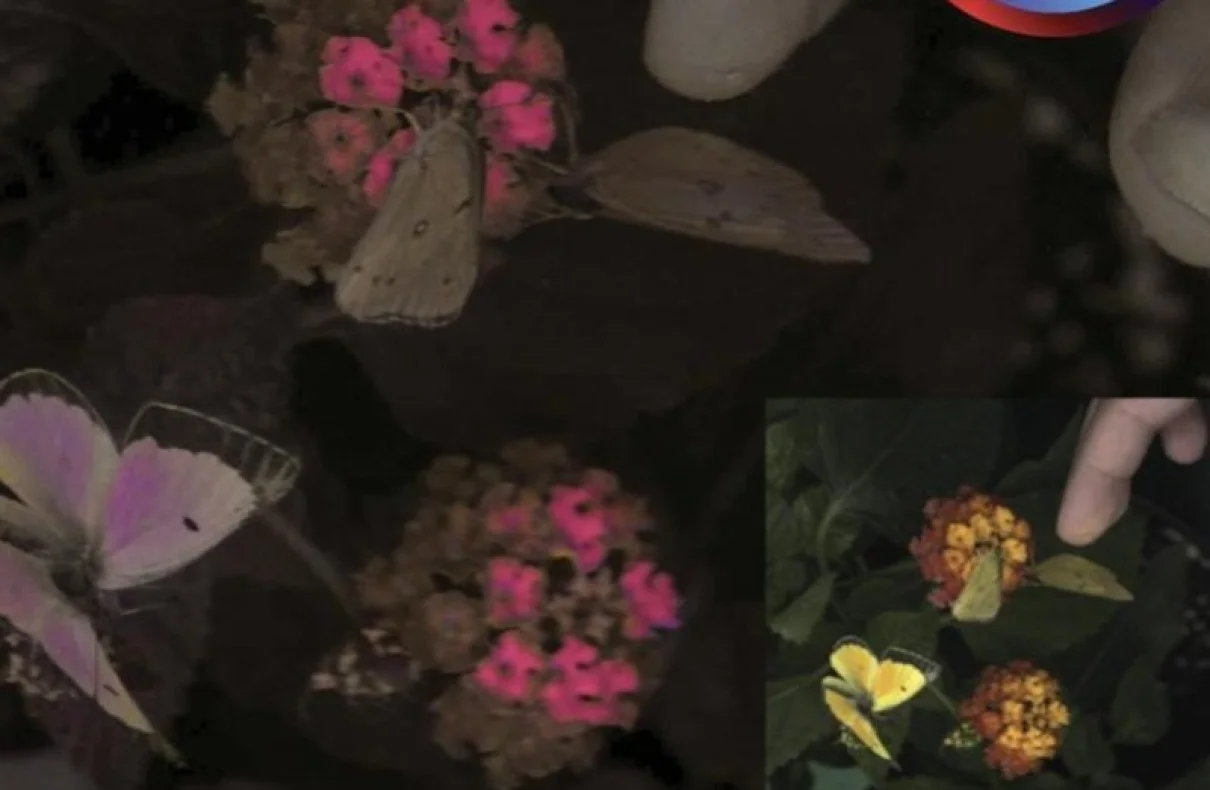Have you ever wondered how animals perceive the colorful world around them? It’s a question that has fascinated scientists for years. Humans see the world through their own unique lens, but what about other species? Thanks to groundbreaking research, we are now one step closer to understanding the vibrant universe through the eyes of animals. A new camera system, designed to capture the way animals see the world, is providing valuable insights into animal perception, communication, and navigation.
Animals experience the world differently from humans due to their unique photoreceptors. These specialized cells in the eye respond to different wavelengths of light, allowing animals to see a broader spectrum of colors than we can. While humans have three types of cone cells in their eyes that detect red, green, and blue wavelengths, animals can see ultraviolet (UV) light and even polarized light. This diversity in photoreceptors means that each animal has its own distinct way of perceiving color.
Traditional methods used to study animal vision, such as spectrophotometry, have limitations. They are time-consuming, require controlled conditions, and can only capture still images. To overcome these challenges, a team of researchers led by the University of Sussex developed a cutting-edge camera system and software that can capture and analyze animal-view videos in real-time.
Capturing the full complexity of animal vision has always been a challenge. Traditional methods, like spectrophotometry, are unable to capture the dynamic aspects of color perception. Researchers needed a new approach that could capture moving images and temporal changes in color. This is where the new camera system comes in.
NASA Shares Latest Stunning Pics of Earth Taken From Space
The researchers combined multispectral photography with 3D digital modeling to create an innovative camera and software system. This approach allows them to animate and study 3D models of animals under various simulated conditions, providing a more accurate representation of how animals perceive colors in motion.
The new camera system consists of two commercial cameras housed in a 3D-printed case. One camera detects visible-wavelength light, while the other is modified to be sensitive to UV light. By recording videos in both visible and UV light, the system can capture a wide range of the light spectrum. The recorded footage is then processed using sophisticated algorithms to generate videos that accurately represent how animals perceive colors.
To achieve this, the researchers developed a pipeline that combines existing multispectral photography methods with their new hardware and software. The system uses a beam splitter to separate UV light from visible light, directing each stream to a different camera. The resulting videos are then processed to match the color perception of specific animals, such as honeybees or UV-sensitive birds.
The new camera system has far-reaching applications in both scientific research and filmmaking. For scientists, it provides a valuable tool to study animal behavior, communication, and evolution. By capturing the full complexity of visual signals in their natural context, researchers can gain insights into how animals perceive and interact with their environment.
Filmmakers can also benefit from this technology. The camera system allows them to accurately depict colors as different animals see them, providing a more immersive and realistic viewing experience. This opens up new possibilities for wildlife documentaries and nature films, allowing viewers to see the world from an animal’s perspective.
Skyscraper Sized Asteroid Set to Pass Within Just 1.7m Miles of Earth
The new camera system offers several advantages over traditional methods of studying animal vision. Compared to spectrophotometry, which is time-consuming and limited to still images, the camera system provides real-time video recordings. This allows researchers to capture rapid changes in color signals and study them in dynamic, real-world settings.
Another advantage is the cost-effectiveness of the camera system. Traditional methods, such as hyperspectral imaging, can cost over $20,000. In contrast, the new camera system can be replicated using commercially available cameras and 3D-printed materials, making it more accessible for researchers with limited budgets.
While the new camera system is a significant advancement in studying animal vision, it does have some limitations. The system requires manual focus and has a limited frame rate, making it challenging to capture fast-moving subjects. Additionally, the current version of the system does not capture every aspect of animal vision, such as polarized light or infrared light.
However, the researchers are continuously improving the camera system and exploring ways to overcome these limitations. Future iterations of the system may incorporate additional features to capture a broader range of animal vision.
